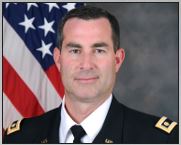Can US Service Members Disobey an Order to Waterboard a Terrorist?
Earlier this year, former National Security Agency (NSA) Director and former Central Intelligence Agency (CIA) Director General (Retired) Michael Hayden was asked what American armed forces would do if ordered to commit torture, such as waterboarding a terrorist, by a new Presidential administration. General Hayden posited that United States military members would simply refuse to act, as there is no obligation to follow an unlawful order.
Published by The Lawfare Institute
in Cooperation With

Earlier this year, former National Security Agency (NSA) Director and former Central Intelligence Agency (CIA) Director General (Retired) Michael Hayden was asked what American armed forces would do if ordered to commit torture, such as waterboarding a terrorist, by a new Presidential administration. General Hayden posited that United States military members would simply refuse to act, as there is no obligation to follow an unlawful order. His answer invites a broader discussion on when a service member may disobey an order from a superior, as well as a narrower dialogue on waterboarding and similar techniques.
It is important to recognize that General Hayden’s statements are somewhat radical. Service members are legally obligated to obey orders except for in the most egregious of circumstances. Military members are often ordered by superiors to undertake dangerous and counter-intuitive behaviors—consider a platoon leader ordered to take a heavily entrenched hill or a squad commanded to not return fire on a mosque with a sniper in its minaret. It is impossible to fully know what makes a subordinate obey an order they personally disagree with or find morally reprehensible, however, the Uniform Code of Military Justice (UCMJ) is one important factor in forcing compliance.
A number of articles in the UCMJ touch on obeying orders, including Article 90—Assaulting or willfully disobeying superior commissioned officer—and Article 92—Failure to obey order or regulation. These articles criminalize disobeying a lawful order and Article 90 expressly states that orders are inferred to be lawful and are “disobeyed at the peril of the subordinate.” The article goes on to note that “the dictates of a person’s conscience, religion, or personal philosophy cannot justify or excuse the disobedience of an otherwise lawful order.” The clear presumption is that service members will obey the orders issued by their superiors. And this makes sense because instinctive compliance to orders is necessary for military effectiveness and discipline within a unit.
Still, the UCMJ articles make clear that obedience is only required for lawful orders. Patently or manifestly illegal orders impose no duty of obedience on the service member and instead mandate disobedience. In fact, a service member who obeys an illegal order is individually culpable for the crime and cannot later assert “following orders” as a defense. This would seem to put service members in the difficult position of being both expected to follow orders and also accountable if an order happens to be criminal. However, in practice, manifestly illegal orders are not difficult to discern. A manifestly illegal order is, as the Israeli Supreme Court stated in the prosecution of Adolf Eichmann, unlawful not “only to the eyes of legal experts, but a flagrant and manifest breach of the law,” that appears “on the face of the order itself.” As a practical matter, service members are expected to clarify any questionable orders and, if a superior continues to demand obviously illegal action, report the circumstances to higher authorities.
Service members are, therefore, both released from their duty to obey a manifestly illegal order and also expected to refuse to participate in patently criminal conduct. Examples of manifestly illegal orders would include an order to murder civilians, to willfully cause great suffering or serious bodily injury to a prisoner of war, or to conduct medical experimentation on a protected person, to name a few. And without question this list includes any order to commit torture. The Law of Armed Conflict unequivocally forbids torture without exception and makes its use a grave breach under both conventional and customary international law. Further, under international human rights law the commission of torture is patently unlawful in any circumstance. Department of Defense Directive 2311.01E invalidates any arguments that there are U.S. military operations not regulated by international law, which therefore could theoretically allow for torture. That directive, which created the Department of Defense Law of War Program, expressly states “members of the DoD Components comply with the law of war during all armed conflicts, however such conflicts are characterized, and in all other military operations” making the prohibition on torture absolute.
Indisputably, a service member is required to disobey an order to commit torture, because such an order is manifestly illegal. But what about those who claim, based on a continued reliance on flawed justifications, that waterboarding and techniques are not torture? Fortunately, even these absurd and disingenuous end-arounds on the prohibition on torture are addressed and invalidated. The manual regulating interrogation for the armed forces, Field Manual (FM) 2-22.3, expressly prohibits waterboarding, conducting mock executions, inducing hypothermia or heat injury, as well as many other actions. The McCain-Feinstein Amendment to the 2016 National Defense Authorization Act enshrines in congressional legislation the requirement for military members to only use the interrogation techniques found in the manual making waterboarding and other similar techniques obviously illegal.
It is clear today that a service member directed to waterboard could, as General Hayden noted, justifiably refuse the manifestly illegal order. But more needs to be done to ensure that service members are not placed in a precarious or impossible position in the future. FM 2-22.3 is easily amendable and the McCain-Feinstein Amendment only requires that service members adhere to the approved techniques in the manual. Therefore, it is possible that a future proponent of such techniques could amend the interrogation manual, adopting the questionable but oft-repeated logic that waterboarding is not torture, and thus allowing its use in military operations.
Disobeying an order from a superior is extremely unusual in the military. Only an obviously illegal order—such as directing a soldier to torture a detained person—can overcome the presumption of obedience. These clear lines are necessary for the effectiveness and security of our military. But instead of strengthening these lines to protect soldiers, our current national conversation has turned to arguments over engaging in activity that is already understood to constitute a manifestly illegal order. This is dangerous, for our military and for our national security.



.jpg?sfvrsn=ca10a5c_5)

